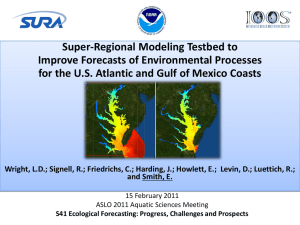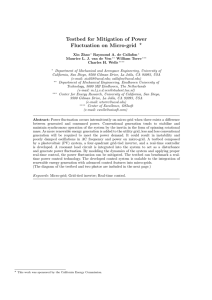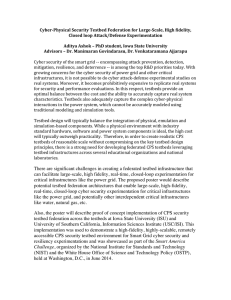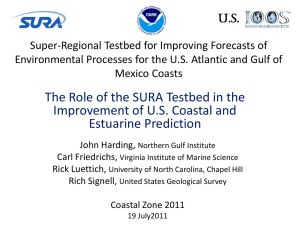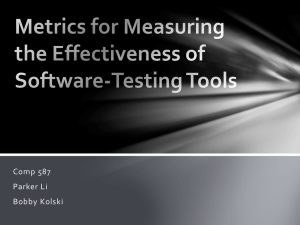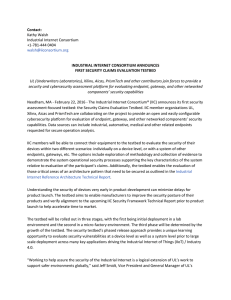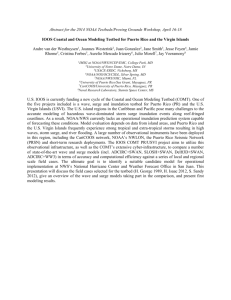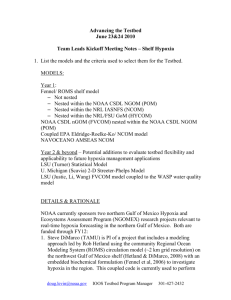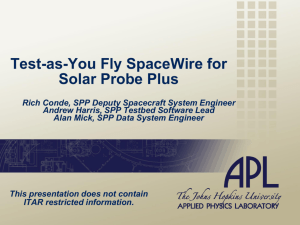TAEG_meeting_2010_12_03_summary
advertisement
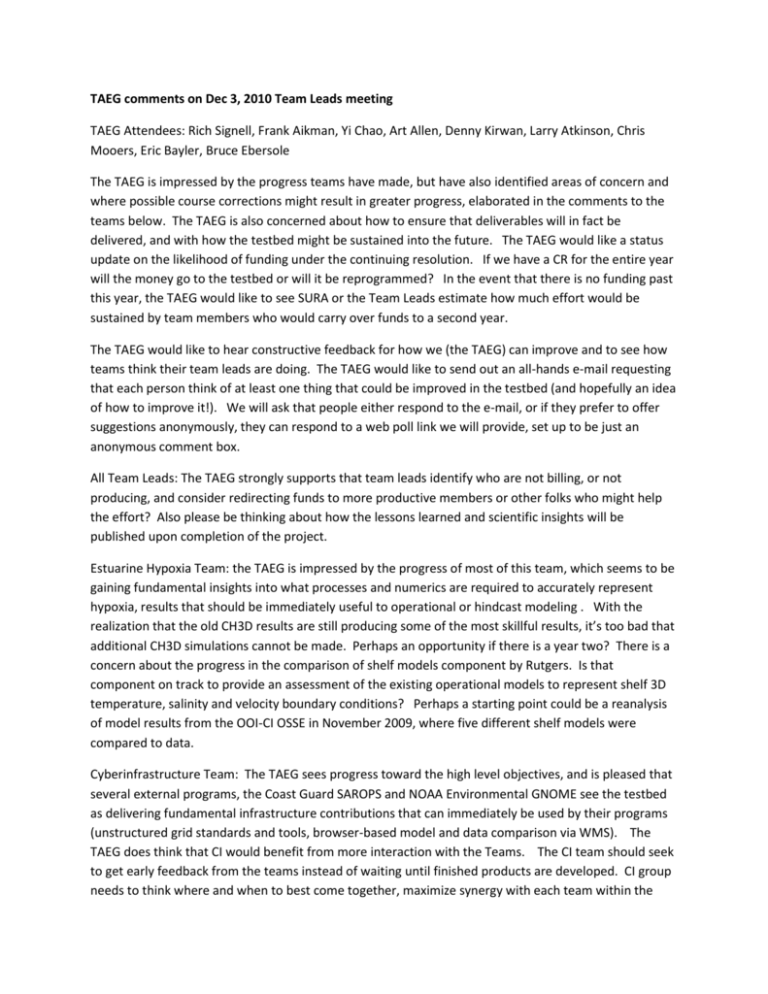
TAEG comments on Dec 3, 2010 Team Leads meeting TAEG Attendees: Rich Signell, Frank Aikman, Yi Chao, Art Allen, Denny Kirwan, Larry Atkinson, Chris Mooers, Eric Bayler, Bruce Ebersole The TAEG is impressed by the progress teams have made, but have also identified areas of concern and where possible course corrections might result in greater progress, elaborated in the comments to the teams below. The TAEG is also concerned about how to ensure that deliverables will in fact be delivered, and with how the testbed might be sustained into the future. The TAEG would like a status update on the likelihood of funding under the continuing resolution. If we have a CR for the entire year will the money go to the testbed or will it be reprogrammed? In the event that there is no funding past this year, the TAEG would like to see SURA or the Team Leads estimate how much effort would be sustained by team members who would carry over funds to a second year. The TAEG would like to hear constructive feedback for how we (the TAEG) can improve and to see how teams think their team leads are doing. The TAEG would like to send out an all-hands e-mail requesting that each person think of at least one thing that could be improved in the testbed (and hopefully an idea of how to improve it!). We will ask that people either respond to the e-mail, or if they prefer to offer suggestions anonymously, they can respond to a web poll link we will provide, set up to be just an anonymous comment box. All Team Leads: The TAEG strongly supports that team leads identify who are not billing, or not producing, and consider redirecting funds to more productive members or other folks who might help the effort? Also please be thinking about how the lessons learned and scientific insights will be published upon completion of the project. Estuarine Hypoxia Team: the TAEG is impressed by the progress of most of this team, which seems to be gaining fundamental insights into what processes and numerics are required to accurately represent hypoxia, results that should be immediately useful to operational or hindcast modeling . With the realization that the old CH3D results are still producing some of the most skillful results, it’s too bad that additional CH3D simulations cannot be made. Perhaps an opportunity if there is a year two? There is a concern about the progress in the comparison of shelf models component by Rutgers. Is that component on track to provide an assessment of the existing operational models to represent shelf 3D temperature, salinity and velocity boundary conditions? Perhaps a starting point could be a reanalysis of model results from the OOI-CI OSSE in November 2009, where five different shelf models were compared to data. Cyberinfrastructure Team: The TAEG sees progress toward the high level objectives, and is pleased that several external programs, the Coast Guard SAROPS and NOAA Environmental GNOME see the testbed as delivering fundamental infrastructure contributions that can immediately be used by their programs (unstructured grid standards and tools, browser-based model and data comparison via WMS). The TAEG does think that CI would benefit from more interaction with the Teams. The CI team should seek to get early feedback from the teams instead of waiting until finished products are developed. CI group needs to think where and when to best come together, maximize synergy with each team within the next 6 months. As soon as tools are felt to be capable of improving existing practices, CI should hold webinars on how to use the tools and gather feedback. The CI team should also work to get a cataloging system in place, as the testbed upload server is turning into a bit of a jungle. Shelf Hypoxia: This team seems the best-positioned to provide a first-generation operational prediction capability after a few years of testing, but there is concern that there has been a lot of talk without much progress in some areas. In particular, the TAMU situation is somewhat alarming, in that at the 50% completion point there has been no progress due to lack of a single postdoc. While it is great that a postdoc is coming on board, is it likely there will be immediate productivity? We need to carefully monitor this in the next reporting period. Inundation: The inundation team also seems to be making fundamental discoveries about the nature of 2D and 3D unstructured grid model resolution and accuracy that will be extremely useful to the operational centers. After a slow start due to formatting problems and CPU resources due to the overly large initial comparison grid, the team seems to be making better progress. The TAEG is not sure if the groups have finished the Gulf astronomical tidal simulations. If they have not done so, the TAEG recommends they set a milestone to finish those simulations, upload files, and perform skill assessment using the IMEDS tools, and then prepare some summary documentation of the results. Create an example of the model simulation and evaluation process from A to as close to Z as possible. The TAEG will encourage them to also set milestones for completing the storm simulations on the coarse meshes then the fine meshes in the same way. The TAEG understands that with Eve leaving, Jeff Hansen will be the contact for IMEDS, but does he have support? Last month the TAEG suggested that Hendrik Tolman be actively sought out for engagement, but has he become more involved? What does his work plan contain and is his work proceeding as planned? Leadership: Last month the TAEG recommended that Gregg Jacobs (NRL), Frank Bub (NAVO) and Aijun Zhang (NOAA/NOS/CO-OPS) should be invited to join the TAEG. This recommendation was not followed through on by the testbed leadership. The TAEG encourages the Leadership to provide constructive criticism and to seek accountability as well as being cheerleaders. An accounting of how each team is doing on the promised deliverables relative to current progress should be assessed. As necessary, make mid-course corrections in the deliverables to ensure quality results, even if it requires relaxing expectations to something more feasible. A major deliverable should be the establishment of working partnerships w/federal developmental and operational entities and personnel. Hence, we should be hearing more about how those partnerships are progressing.
